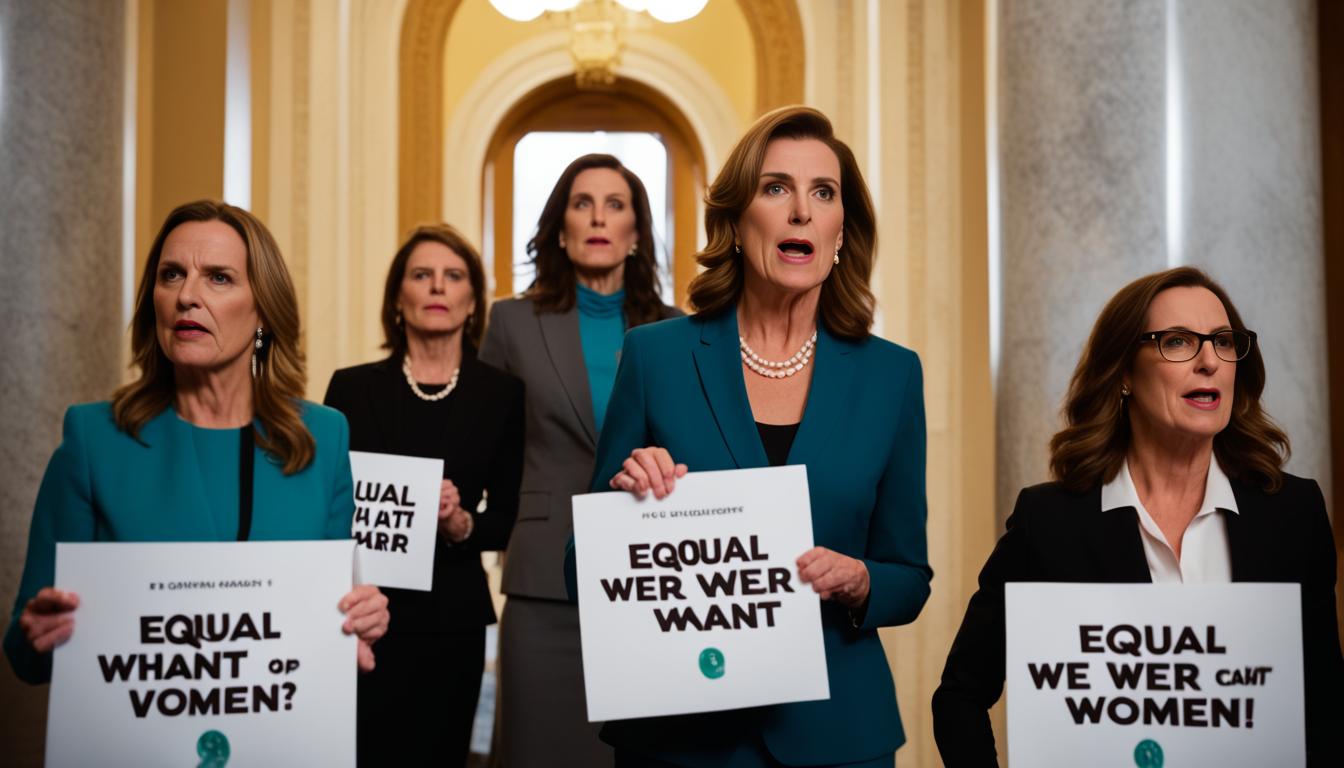The U.S. Senate’s outdated dress code for women senators changed in 1993. Carol Moseley Braun, the first African American woman senator, led this change. She challenged the rule that required women to wear dresses or skirts with jackets.
Before 1993, peer pressure and Senate doorkeepers enforced the dress code. Female aides tried to change it in 1972 but were ignored. Moseley Braun’s election finally brought attention to this issue.
In early 1993, Moseley Braun wore an Armani pantsuit to the Senate floor. Her bold choice caused gasps and sparked a conversation. It was a powerful statement for gender equality and women’s right to choose their work clothes.
The pantsuit revolution wasn’t just about fashion. It challenged traditional gender norms in a male-dominated institution. Women senators were asserting their right to be treated as equals.
By wearing pants, these senators took a big step towards gender equality in politics. This historic moment marked a significant change in American political culture.
Key Takeaways
- The U.S. Senate’s dress code required women senators to wear dresses or skirts with a jacket until 1993.
- Carol Moseley Braun, the first African American woman elected to the Senate, challenged the outdated dress code by wearing a pantsuit.
- The pantsuit revolution in the Senate was a symbolic gesture that challenged traditional gender norms and expectations.
- Women senators asserted their right to be treated as equals in a male-dominated institution by wearing pants on the Senate floor.
- The historic moment marked a significant step forward in the fight for gender equality in American politics.
The Historic Election of Carol Moseley Braun
Carol Moseley Braun made history in 1992. She became the first African American woman elected to the U.S. Senate. In the Illinois legislature, she often wore pantsuits, preparing her for senatorial challenges.
Moseley Braun’s election was a turning point in American politics. She broke barriers and challenged the male-dominated Senate. Her presence brought fresh perspectives on women’s and minority issues.
As a pioneer, Moseley Braun faced many obstacles. Yet, her dedication to public service remained strong. She focused on representing Illinois and promoting equality and justice.
In early 1993, Moseley Braun wore a pantsuit on the Senate floor. This bold move challenged outdated dress codes. It sparked discussions about gender equality in Congress.
Her actions opened doors for future women senators. They could now express themselves through their clothing choices. Moseley Braun helped modernize the Senate’s dress standards.
The Senate’s Outdated Dress Code
The U.S. Senate’s dress code required women to wear dresses or skirts with jackets. This rule was enforced through peer pressure and Senate doorkeepers. The dress code clearly showed gender bias in Congress.
In 1972, female aides tried to challenge the dress code but were ignored. This showed the Senate’s resistance to change. The strict dress code lasted for decades, limiting women’s expression.

In 1993, more women senators joined, sparking a shift towards inclusivity. Their presence challenged the outdated rules. This paved the way for much-needed changes in the Senate’s dress code.
The old dress code mirrored society’s expectations for women’s clothing. It limited women’s freedom and reinforced stereotypes. This outdated rule hindered progress towards gender equality in politics.
Women Senators’ Pants Rule: The Pantsuit Revolution
Carol Moseley Braun made history as the first African American woman senator. She boldly wore a pantsuit on the Senate floor. Senator Barbara Mikulski followed suit, challenging the outdated dress code.
Moseley Braun likely pioneered pants-wearing in the Senate. Her action inspired female staffers, journalists, and other women senators. They advocated for an official allowance to wear pants, sparking the “pantsuit revolution.”
More women senators adopted pantsuits as professional attire. They argued the old dress code was restrictive. The movement pushed for modernization and recognition of women’s contributions.
The Senate’s dress code was a relic of the past. Like New England’s vampire panics, it stemmed from outdated norms. Women senators fought to change these antiquated expectations.
Trailblazers like Mikulski and Moseley Braun transformed the Senate. Their courage inspired a new generation of women leaders. These pioneers fought for rights and demanded change in the halls of power.
The Amendment to the Senate Dress Code
In 1993, Senate Sergeant at Arms Martha Pope changed the Senate dress code. Women could now wear pantsuits on the Senate floor. This happened after Senators Carol Moseley Braun and Barbara Mikulski challenged the old rules.
The amendment was a big step for gender equality in Congress. It showed changing attitudes about professional women’s attire. It also recognized the growing number of female lawmakers in power.
The new dress code gave women more clothing options. It proved women could be professional in comfortable outfits. This change matched what male senators had enjoyed for years.
Martha Pope, Carol Moseley Braun, and Barbara Mikulski were pioneers. They opened doors for future women in Congress. Their actions allowed women to express themselves through clothing without fear.
Today, women senators can focus on their work. They know their clothes won’t hold them back. This freedom is thanks to those brave leaders who fought for change.

Leave a Reply